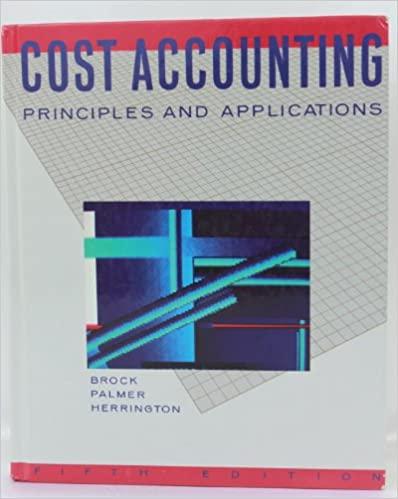Making journal entries for a sale of a by-product when different accounting methods are used. The Wilkinson
Question:
Making journal entries for a sale of a by-product when different accounting methods are used. The Wilkinson Company manufactures a single product in powdered form. In the Cooking Department, certain impurities are removed and become a by-product.
Instructions 1. On July 1, 19X7, 13,800 kilograms of the by-product recovered in the month of June were in storage awaiting sale. These 13,800 kilograms were sold on July 5 for $.28 per kilogram. Assume that no entry is made for the by-product until it is sold. Give the entry in general journal form to record the sale for cash of 13,800 kilograms under the following procedures:
a. The proceeds of the sale are treated as miscellaneous income. (Date the entry July 31, 19X7.)
b. The proceeds of the sale are treated as a reduction in the cost of the main product. (Credit Work in Process—Cooking Department 122 instead of Miscellaneous Income.)
2. During the month of July, an additional 21,700 kilograms of the by-product were recovered. These were sold on August 6. Instead of the procedures in Instruction 1, assume that the estimated sales value of the by-product is treated as a reduction in the cost of the main product when it is removed. Give the entries in general journal form to record the following:
a. Recovery of the 21,700 kilograms during July, assuming an estimated value of
$.28 per kilogram. (Date the entry July 31, 19X7.)
b. Sale on credit of the 21,700 kilograms on August 6 at $.30 per kilogram.
Step by Step Answer:

Cost Accounting Principles And Applications
ISBN: 9780070081529
5th Edition
Authors: Horace R. Brock





